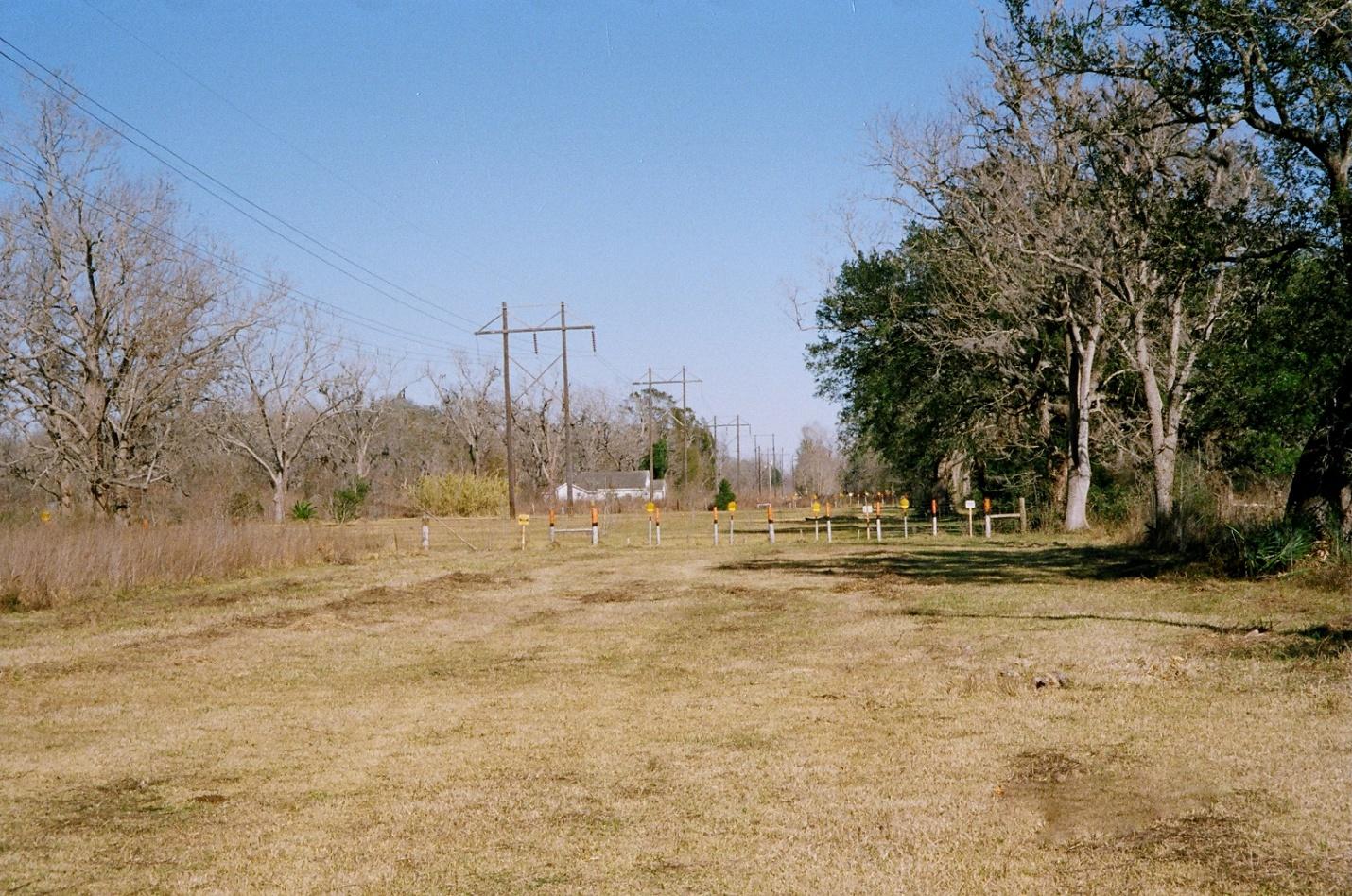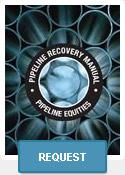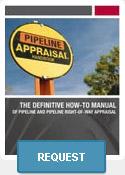Pipeline Equities
PO Box 571977
Houston, Texas 77257
Phone: 713-623-0690
Pipeline Recovery
excavation & removal
Damage Assessment
of easements
Pipeline Appraisal
pipeline property valuation
Pipeline Equities
PO Box 571977
Houston, Texas 77257
Phone: 713-623-0690
excavation & removal
of easements
pipeline property valuation
Many right of way appraisers rely on the “across-the-fence” (ATF) method to assign value to a particular right of way. The ATF method suggests that the right of way is worth whatever the surrounding land is worth. This method is popular, but only accounts for the value of the land itself. It does not take into account the value of the entity that uses the right of way, especially when it comes to right of way segments that contain pipelines. Typically, an easement or right of way contributes 5% to 7% of the cost of a building a pipeline and is not a large factor in the value.
Pipeline Equities saw the need to find methods of appraisal that are suited specifically to the pipeline industry. The need for pipeline appraisals came about initially when a discovery was made of the overvaluation of pipelines by local taxing authorities as well as overvaluation (and undervaluation) of pipelines involved in mergers, acquisitions, or estate settlements.
A valuation report concerning active or inactive oil, gas, or product pipeline may be needed for the following reasons:
Pipeline Equities uses a combination of various methods to determine the value of a pipeline.
Market analysis utilizes comparable sales histories. This works well for valuing land and housing, but each pipeline is so different that a method of comparable sales is not so useful. Because land and houses are plentiful, making commodities of land or houses is much easier than making commodities of pipelines. However, this method is still useful to get an overview by looking at sales histories of comparable pipelines in varying circumstances and locales in order to get some ideas in broader areas of comparison such as urban versus rural, California versus Mississippi, gas versus crude, and regulated versus non regulated pipelines. This factor is also called comparable analysis and is the primary tool for determining pipeline right of way values as opposed to the Across the Fence or ATF method used by real estate appraisers for valuing road and power line easements.
Highest and Best Use is not best applied to pipeline evaluation; however, on occasion when pipelines are being valued for usage change, this method can be useful to establish the value of the existing pipeline and the cost of converting it for another use. Pipelines can be converted from crude product pipeline to fiber optic conduits or conduits for electric power line cables from wind farms electric grid centers. For the most part, pipelines are best used for the intent constructed. In the approach using highest and best use, it is better to combine the valuation with some of the forty factors such as size of line, geography, terrain or right of way values. An example might be that the highest and best use for a six-inch gas line might be to change it out for a ten-inch crude line using the same right of way if the contract permits the replacement.

Multiple lines in a right of way corridor.
This method is used if the seller wants to record financial gain or loss from a sale use book value. It is not of much use to a purchaser since it has no relevance to current worth. Basically, the book value might be generated by the accounting of the seller or owner of the property, in whatever means the company accounting might use to determine the book value. It might be based on one or the other methods of determining value such as construction cost new and discounted, for example, but generally this book value designation by the seller has no relevance to the value as far as the purchaser is concerned.
This method is a popular means of establishing value for pipelines if they are generating or will generate a predicted cash flow. This method takes into account forecasted income based on throughput volumes and rates of the commodity transported. Expenses based on a historical or projected income stream are discounted. Another variation of this method uses multiples of current cash flow where the average annual cash flow is multiplied by a factor of five to twelve. This can be done on annual or monthly basis much like values of oil and gas royalties are determined. Many like to compare pipeline values to oil and gas mineral interests regarding value. Both can have an indefinite life and both can be reborn as new drilling or new discoveries are made in and area. These additional income streams can be discounted to find a present day value or Net Present Value (NPV) in some cases when using future multiples or income. For example, the future income after operating expenses of a gas pipeline might be $200,000 per year. A reasonable value might be five times that amount or $1,000,000. A buyer might determine that the net present value in dollars paid today might be 20% less than the $1,000,000 or $800,000 Net Present Value in today’s dollars.
Construction cost new or replacement cost is the cost of rebuilding the same pipeline in the same size, same manner, and same (or comparable) easement. This is an important factor in placing value on a pipeline to be considered by a purchaser. This approach also can be discounted. An example would be in determining the value of a pipeline that has been operating for ten years after it was initially installed. The line might have an expected life of forty years. It could be discounted 2.5% per year of life or a total of 25% off the cost of new construction in today market.
Each of the above methods can be employed to determine value for a property if the occasion calls or a combination of all can be used. We have found that value occurs with the interaction of demand for the property, utility of the property, scarcity or supply of the property, and ready transferability of ownership rights.
In the area of local distribution, a per customer value is sometimes used to realize value for a system. This per customer value is assessed on an individual basis and vary depending on whether the system is in an urban or rural area, high or static growth and other demographic factors. Greater multiples are used for commercial and industrial customers than residential. Residential customers might be valued individually from as little as $400 in a low use slow growth area to as much as $2000 in a high use high growth area.
In addition to these methods, several factors must be considered when assigning value to a pipeline. Pipeline Equities uses as many as 40 different factors to make our value determinations regarding pipelines. These factors cover the more technical aspects of business, physical, property, and commodity value. Some of these regarding pipelines might include:
Other factors depend on whether product is purchased at the wellhead and resold, whether and to what extent the product is compressed, enhanced, treated, cleaned, or processed and by what procedures.
Pipeline Equities has had several recent opportunities to appraise pipelines for a variety of purposes.
Pipeline Equities recently appraised a vintage crude pipeline in a mature field on the West Coast. The line had been active in the past and later idled. The operator had intentions of rehabilitation and reactivation of the line and needed a fresh appraisal to help determine transport fees or tariffs as a common carrier. It was necessary to estimate the new construction price as well as depreciation and account for rehabilitation costs. We found the appreciation of the right of way costs in the heavily congested area more than made up for any deficiency in depreciated new construction costs.
A bank contacted Pipeline Equities to obtain an appraised value for a pipeline to be built that would transport jet fuel to an airport. The bank wanted to know the value of the proposed pipeline before financing the construction cost. In place were the contract (long term), a firm bid for construction (construction cost new), and competent experienced management.
A hedge fund made a decision to exit the pipeline business and sought Pipeline Equities for an appraisal of hundreds of miles of their active and inactive gathering and transmission pipelines. They needed to determine the value of the pipeline network in order to divide interests among investors. Pipeline Equities was able to use multiple methods including salvage to come to an equitable value to which all parties agreed. Many of the gathering lines had no discernible easement by which a right of way only method like the ATF method could be used.
We have had many instances where a pipeline or gathering system was built for a new field with flush production and the field now is nearing depletion. The operators still must pay regular taxes where applicable according to earlier throughput or initial values, which were generally not depreciated. Local and state taxing authorities want up-to-date appraisals if they are to lower rates. Many local tax appraisers use only construction cost new methods with no regard for throughput generally via abbreviated Marshal and Swift formulas (Marshall and Swift is a commercial database of information, which is like a supermarket for almost any kind of asset valuation. The data is offered on a subscription basis.)
The appraisal of pipelines is a specialized and niche industry. The methods for determining value are different from any other type of appraisal practice due to the uniqueness of the product being appraised. No two pipelines are the same. Our methods are based on the way a pipeline owner looks at a pipeline and the right of way in which it rests.
Ultimately, the appraiser can only offer an opinion based on data available and market conditions. When it is all completed, the value is based on what the seller will take and what the buyer will give for a property.
Each of the factors, examples, methods and definitions could be greatly expanded on. For additional information on this subject email a request for a complimentary copy of the Pipeline Recovery Manual to davidhowell@pipelineequities.com

Fill out the short form below to receive our Pipeline Recovery Manual.
Sign up for our free newsletter to receive your complimentary copy of our Pipeline Recovery Manual that explains our entire process for recovering or salvaging idled or abandoned pipelines.
You will see how we deal with landowners regarding notification and recordings. How to draft a contract of sale with models by: Exxon, Texaco, Koch and others and pictures showing actual work in process.
The manual shows Pipeline Equities job references, right of way releases, agreements and the history and background of Pipeline Equities and managing partner David Howell. These references touch on parts of the six million feet of line removed or handled by the company over the past twenty years.
A line pipe table describing various weights, grades, and pressure ratings of ERW and seamless line pipe is included. This section is an indispensable tool for anyone doing operational word with line pipe.
Also included are extensive glossaries of pipe, pipeline, and right of way terms.

Request a complimentary Pipeline Appraisal Handbook
Fill out this short form and you will be sent a confirmation link to our Newsletter. Once you click the link you will be subscribed to our newsletter and taken to a page where you can download the Pipeline Appraisal Handbook.
This handbook written by David Howell, managing partner of Pipeline Equities is the basic text of any pipeline valuation. All of the essential factors for establishing the value of a pipeline are discussed along with exclusive proprietary formulas and tables essential to a certified appraisal.
Also included are 32 pages of pipe weight and grades tables that cover virtually any situation which might be encountered regarding line pipe requirements. Additionally you’ll find an extensive glossary of pipe, pipeline and right of way terminology is part of the Handbook.
Subjects include: Replacement, Right of Way, Surface Inventory, Throughput, Salvage/Recovery, and comparable sales histories to name a few of the basic factors of pipeline appraisal.
The author recognized a need for a report or “how to” manual for properly appraising pipelines and pipeline right of ways. Currently the work is being done by accounting firms, engineers, and real estate appraisers.
Howell has forty-five years experience in many sectors of the petroleum industry from drilling contractor and oil and gas operator to pipe and supply distribution throughout the world. He has published Tradex Equipment magazine, the Whole World Oil Directory, and the Texas Oil Register.
For the past twenty years, Howell has been almost exclusively engaged in pipeline sales and acquisition, appraisal, removal for salvage, environmental remediation and general pipeline operations.
Howell currently serves on board of the Pipeline Appraisal Institute and is a member of the International Right of Way Association. Howell is a graduate of Texas A&M University – Kingsville and a native of Alice, Texas. He is currently residing in Houston and is the managing partner of Pipeline Equities.